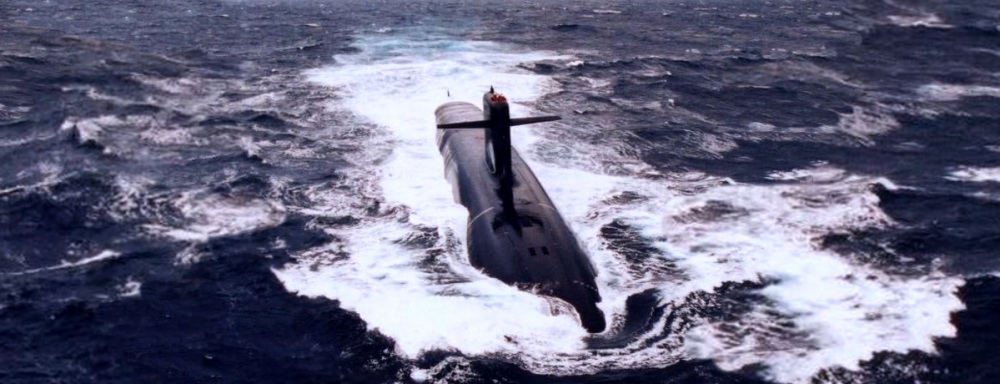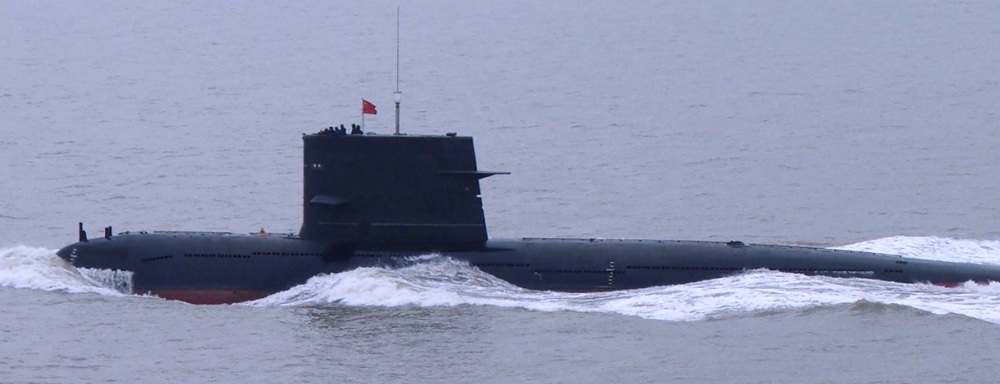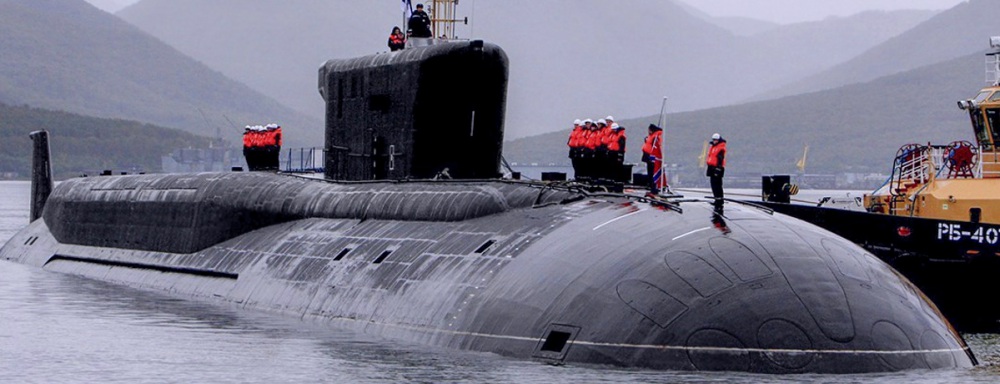
About the image
Capabilities at a Glance
The French submarine fleet consists of nuclear-propelled attack (SSNs) and ballistic missile submarines (SSBNs). France helped pioneer the development of air independent propulsion (AIP) technology, which the state-owned company Naval Group now export along with vessels.1 The French Navy’s SSBN force is the nucleus of the country’s strategic deterrent as it maintains a continuous presence at-sea.2
Total Submarines in Fleet: 12
- Ballistic Missile Submarines (SSBNs): 4
- Nuclear-Powered attack submarines (SSNs): 8
- Diesel-electric attack submarines (SSKs): 0
- Air-independent propulsion (AIP) enabled: 0/10
Submarines
History
Starting in 1991, all six units from France’s fleet of Le Redoutable-class SSBNs were gradually decommissioned, with the final vessel, L’Inflexible decommissioned in 2008.3 The Triomphant class replaced these submarines starting in 1997. France currently has six nuclear-powered Rubis- and Améthyste-class attack submarines (SSNs) on active duty. However, the new Barracuda-class attack submarines are set to gradually replace the current Rubis- and Améthyste-class vessels, the first of which, the Suffren, was commissioned on November 6, 2020 is due to enter service.4 The attack boats’ main task is the protection of France’s SSBN force and carrier group via anti-submarine and anti-surface warfare. In addition to traditional sea control and sea denial operations, the attack submarines are tasked with Special Forces deployment; surveillance and intelligence gathering; and missions against piracy, narcotics, and human trafficking.5
Modernization and Current Capabilities
France currently operates four Le Triomphant-class strategic missile submarines (SSBNs) based at Ile Longue, Brest. The first three Le Triomphant-class submarines carry 16 vertically launched M45 ballistic missiles as well as a TN-71 thermonuclear warhead with six Multiple Independently-targetable Reentry Vehicles (MIRVs).6 These vessels will be progressively adapted to carry 16 M-51 thermonuclear warheads each, with a range of 8,000km by 2018. The final vessel, Le Terrible, entered into service in 2010 and is equipped with 16 new M-51 submarine-launched ballistic missiles (SLBMs) each carrying a nuclear warhead with six MIRVs.7 The Le Triomphant-class submarines will be steadily replaced by a third generation of new submarines beginning in 2035.8 French systems company Thales has been contracted to design the sonar system for the new fleet, as well as a new antenna system.9
France’s draft 2019-2025 military budget includes six new Barracuda-class SSNs, which began design in 2002. Built by Naval Group, the new Barracuda-class features improved communication capabilities and an increased force-projection capability based on cruise missiles.10 The first of these Barracuda-class SSNs was entered active duty on 3 June 3rd 2022.11 France and Britain have jointly developed the Storm Shadow/Scalp EG cruise missile, which can fulfill this force projection requirement due to its high accuracy and effectiveness against hardened targets.12
Ship Biographies
Rubis-Class and Améthyste-Class
France possesses four Rubis-class and two Améthyste-class nuclear-propelled attack submarines (SSNs). The initial design of the Rubis was problematic due to unexpected high noise levels. The French then developed the Améthyste (Amélioration Tactique Hydrodynamique Silence Transmission Ecoute) silencing program which was applied to the design of the fifth (S605) and sixth (S606) Rubis-class submarines. The program also included upgrades to the sonar and electronics system. Once the upgrades were tested and proven, the original four Rubis-class submarines were rebuilt to the same standards of the S605 and S606 between 1989 and 1994.13
All of the Rubis-class submarines are 73.6 meters long with a 7.6-meter-wide beam and can travel up to 25 knots when submerged. They can remain submerged for about 60 days without surfacing. Their weapons systems can fire anti-ship missiles and torpedoes.14
Le Triomphant-Class
France possesses four Le Triomphant-class ballistic missile submarines (SSBNs). These submarines are 138 meters long with a 12.5-meter-wide beam and can travel over 25 knots when submerged. They can remain submerged for about 60 days without surfacing. Their weapons system can fire anti-ship missiles, sea-launched ballistic missiles (SLBMs), and torpedoes.
Barracuda-Class
France possesses one Barracuda-class nuclear-propelled attack submarine (SSN). The Suffren is the first of six Barracuda-class submarines. It has a surface displacement of 4,700 tons and a diving displacement of 5,100 tons. It is 99 meters in length and has an 8.8 meter diameter. It can dive to depths below 350 meters and is able to travel over 25 knots per hour. It is armed with naval cruise missiles, F21 heavy-weight wire-guided torpedoes, Exocet SM39 anti-ship missiles, FG-29 mines, and the D-19 UUV. It is powered by a pressurized water reactor that produces 150 MW. It can endure operations of up to 70 days. The Suffren brings a new level of operational stealth ability to the French navy.15
Import and Export Behavior
Imports
France does not import submarines.
Exports
The French company, Naval Group (formerly DCNS), is the primary naval shipyard for the French Navy and one of the leading international naval suppliers. A state-owned corporation, Naval Group supplies the complete range of conventional and nuclear-propelled submarines and surface vessels as well as maintenance and logistical support. In addition, the company offers integrated command and control and combat systems for its vessels in cooperation with Thales Naval France.16 Naval Group mainly exports two submarines: The Scorpène-class diesel-electric submarine with optional AIP and the conventionally powered variant of the Barracuda-class nuclear-powered submarines called the Shortfin Barracuda Block 1A. The former group of submarines are built for Brazil, Malaysia, India, and Chile.17
In 1994, Naval Group signed contracts to sell three Agosta 90B diesel-electric attack submarines (SSKs) to Pakistan. The third ship, commissioned in 2008, was the first vessel equipped with Naval Group’s AIP system, MESMA (Module d’Energie Sous-Marin Autonome).18 19 MESMA is based on a closed-cycle steam turbine and can be retrofitted via a plug-in extension during a major overhaul.20 In 1997, Naval Group contracted to sell two vessels of its new Scorpène-class to Chile, the second of which was delivered in 2007.21 This was a significant move by Naval Group as it broke into what was traditionally German company Howaldtswerke-Deutsche Werft (HDW)’s market.22 Naval Group has since received orders for several Scorpène-class vessels from India and Brazil. In 2005, the Mazagon Docks Limited (MDL) in Mumbai began construction of six Scorpène-class variants (Kalvari-class) with substantial technology transfer from Naval Group for the Ministry of Defence’s Project 75. The third boat of the Project 75 program was launched from Mumbai in January 2018.23 In 2008, Naval Group won a bid to supply four diesel-electric Scorpène-class vessels to Brazil.24 Naval Group will also provide the hull for Brazil’s first nuclear-powered submarine, although it will not provide any of the nuclear components.25 In 2016, Naval Group won a bid to replace Australia’s Collins-class boats with twelve Shortfin Barracuda-class submarines. Naval Group is currently assisting the Australian Submarine Corporation (ASC) in locally building non-nuclear Barracuda-class submarines.26
Explore the Collection
Australia Submarine Capabilities
Brazil Submarine Capabilities
Chile Submarine Capabilities
China Submarine Capabilities
Your are currently on
France Submarine Capabilities
Germany Submarine Capabilities
Greece Submarine Capabilities
India Submarine Capabilities
Indonesia Submarine Capabilities
Iran Submarine Capabilities
Israel Submarine Capabilities
Italy Submarine Capabilities
Japan Submarine Capabilities
Malaysia Submarine Capabilities
Netherlands Submarine Capabilities
North Korea Submarine Capabilities
Pakistan Submarine Capabilities
Russia Submarine Capabilities
Singapore Submarine Capabilities
South Korea Submarine Capabilities
Sweden Submarine Capabilities
Taiwan Submarine Capabilities
United States Submarine Capabilities
Submarine Detection and Monitoring: Open-Source Tools and Technologies
Stay Informed
Sign up for our newsletter to get the latest on nuclear and biological threats.
More on
United States Submarine Capabilities
Overview of the United States' submarine capabilities and import-export behavior.

China Submarine Capabilities
A highlight of global trends in the sale and acquisition of diesel- and nuclear-powered submarines by country with capabilities, imports and exports. (CNS)

Russia Submarine Capabilities
Overview of Russia's submarine capabilities and import-export behavior.
Glossary
- SSBN
- Ship, Submersible, Ballistic, Nuclear: A hull classification for a submarine capable of launching a ballistic missile. The "N", or nuclear, refers to the ship's propulsion system. SSBN's are generally reserved for strategic vessels, as most submarine launched ballistic missiles carry nuclear payloads. A non-strategic vessel carries the designation SSN, or attack submarine.
- Diesel-electric submarine
- Diesel-electric submarine: A submarine with a diesel-electric transmission. Diesel-electric transmissions require access to oxygen for the diesel generator to charge the submarine’s batteries or drive the motor. This type of submarine is thus louder and must surface more frequently than a nuclear-powered submarine. A diesel-electric submarine can fire conventional cruise missiles against land targets, and in theory, can also carry nuclear-tipped cruise missiles. Diesel-electric submarines are significantly cheaper to build and purchase than nuclear-powered vessels, which makes them the vessel of choice for smaller navies.
- Air Independent Propulsion Technology (AIP)
- Air Independent Propulsion Technology (AIP): A propulsion system that uses liquid (or compressed) oxygen or hydrogen fuel cells, thereby allowing submarines to stay submerged for longer periods without the need for external sources of oxygen. This increased endurance also increases a submarine’s survivability.
- Deployment
- The positioning of military forces – conventional and/or nuclear – in conjunction with military planning.
- Ballistic missile
- A delivery vehicle powered by a liquid or solid fueled rocket that primarily travels in a ballistic (free-fall) trajectory. The flight of a ballistic missile includes three phases: 1) boost phase, where the rocket generates thrust to launch the missile into flight; 2) midcourse phase, where the missile coasts in an arc under the influence of gravity; and 3) terminal phase, in which the missile descends towards its target. Ballistic missiles can be characterized by three key parameters - range, payload, and Circular Error Probable (CEP), or targeting precision. Ballistic missiles are primarily intended for use against ground targets.
- Thermonuclear weapon
- Thermonuclear weapon: A nuclear weapon in which the fusion of light nuclei, such as deuterium and tritium, leads to a significantly higher explosive yield than in a regular fission weapon. Thermonuclear weapons are sometimes referred to as staged weapons, because the initial fission reaction (the first stage) creates the condition under which the thermonuclear reaction can occur (the second stage). Also archaically referred to as a hydrogen bomb.
- Multiple Independently-targetable Reentry Vehicle (MIRV)
- An offensive ballistic missile system with multiple warheads, each of which can strike a separate target and can be launched by a single booster rocket.
- Submarine-launched ballistic missile (SLBM)
- SLBM: A ballistic missile that is carried on and launched from a submarine.
- Cruise missile
- An unmanned self-propelled guided vehicle that sustains flight through aerodynamic lift for most of its flight path. There are subsonic and supersonic cruise missiles currently deployed in conventional and nuclear arsenals, while conventional hypersonic cruise missiles are currently in development. These can be launched from the air, submarines, or the ground. Although they carry smaller payloads, travel at slower speeds, and cover lesser ranges than ballistic missiles, cruise missiles can be programmed to travel along customized flight paths and to evade missile defense systems.
Sources
- Interview of Jean-Charles Lefebvre, Chief of Naval Staff, by Klaus Jacobsen, “The French navy in a phase of transition,” Naval Forces, 1998, Vol. 19, No. 5, pp. 37-41.
- “France: Nuclear weapons,” Global Security Website, www.globalsecurity.org; “Visite virtuelle sous-marin SNLE - Presentation,” French Navy, www.defense.gouv.fr.
- Norris, Robert S., and Hans M. Kristensen, “French Nuclear Forces, 2008,” Bulletin of the Atomic Scientists, 64, no. 4, September 2008, p. 52–57.
- “Le Sous-marin d’Attaque Futur Barracuda [The Barracuda Future Attack Submarine],” Ministry of Defense, 9 June 2011, www.defense.gouv.fr; “FS Suffren represents the lead-ship of the Barracuda-class of the modern French Navy- commissioning is scheduled for sometime in 2018,” Military Factory, 10 October 2017, www.militaryfactory.com; Zachary Keck, “France Is Building a New Nuclear Powered Submarine. Here Is What It Can Do,” The National Interest, 12 May 12 2018, nationalinterest.org; “Analysis: Naval Group Suffren Barracuda-class new nuclear-powered attack submarine for the French Navy,” Navy Recognition, 7 November 2020, www.navyrecognition.com.
- “France Submarine Forces,” Jane’s Underwater Warfare Systems, 11 November 2009, www.janes.com; “Sous-marin nucléaire d’attaque type Rubis,” French Defense Ministry, www.defense.gouv.fr; “Maritime forces’ contribution to the major strategic functions,” French Ministry of Defense, www.defense.gouv.fr.
- “SSBN Triomphant Class,” Naval Technology, accessed 15 July 2019, www.naval-technology.com.
- “Adaptation au M51 des SNLE [Adaptation for M51 of SSBN],” Ministry of Defense, updated 3 December 2010, www.defense.gouv.fr; “SSBN Triomphant Class,” Naval Technology, accessed 15 June 2018, www.naval-technology.com.
- Jean-Yves Le Drian, “Discours de clôture, colloque pour les 50 ans de la dissuasion,” 20 November 2014, www.defense.gouv.fr.
- Allen Cone, “Thales to develop sonar system for new French sub,” UPI, 8 February 2018, www.upi.com.
- Interview with Jean-Louis Battet, Chief of Staff, by Wolfgang Legien, “French Navy - ready for the 21st century,” Naval Forces, 2002, Vol. 23, No. 5, pp. 8-13; in ProQuest Information and Learning Company, http://proquest.umi.com; Zachary Keck, “France Is Building a New Nuclear-Powered Submarine. Here Is What It Can Do,” The National Interest, 12 May 2018, nationalinterest.org.
- “The ‘Suffren,’ the first next-generation French nuclear attack submarine, enters into active service,” Le Monde, 4 June 2022, LeMonde.FR.
- “Storm Shadow/Scalp EG/Conventionally armed standoff missile (CASOM),” Federation of American Scientists, www.fas.org.
- “Amethyste Class,” ForecastInternational, March 1998, www.forecastinternational.com.
- “SNA Améthyste (S 605),” Ministère Des Armées, 1 April 2017 www.defense.gouv.fr.
- “France’s New SSN Flexes Undersea Capabilities,” U.S Naval Institute, August 2022, usni.org.
- “Product portfolio,” DCN Website, www.dcn.fr; “Through-life support, submarines,” Service Portfolio, DCN Website, www.dcn.fr.
- “Submarines,” Naval Group, accessed 15 June 2018, http://naval-group.com.au.
- “First Mesma AIP passes acceptance tests,” Media Press Releases, DCN, www.dcn.fr.
- Jon Rosamond, “Pakistan commissions AIP-Equipped Agosta,” Jane’s Defence Weekly, 8 October 2008, www.lexisnexis.com; Nick Brown, “Pakistan Enhances AIP Fleet with DCN Order,” Jane’s Defence Weekly, 7 March 2007, www.lexisnexis.com; “SSK Agosta 90B Class Submarine, France,” www.naval-technology.com.
- “Attack submarines,” DCN Website, www.dcn.fr.
- Denise Hammick, “Chile’s Second Scorpene Arrives in Country,” Jane’s Defence Weekly, 3 January 2007, www.lexisnexis.com.
- “The Naval Shipbuilding Directorate (DCN),” Military Technology, August 1998, Vol. 22, No. 8, pp. S26-28; in ProQuest Information and Learning Company, http://proquest.umi.com.
- Shaurya Karanbir Gurung, “Indian Navy launches third Scorpene class submarine in Mumbai,” 31 January 2018, https://economictimes.indiatimes.com.
- Sarah Diehl and Eduardo Fujii, “Brazil’s New National Defense Strategy Calls for Strategic Nuclear Developments,” Issue Brief for the Nuclear Threat Initiative, 30 October 2009, www.nti.org.
- “Acordo Entre o Governo da República Federativa do Brasil e o Governo da República Francesa na Area de Submarinos,” DEFESA@NET web site, 23 December 2008.
- John Kerin, “Japan to hand over secret submarine data to Austrlia,” AFR Weekend, 7 May 2015, www.afr.com; Hans J. Ohff, “Why the French submarine won the bid to replace the Collins-class,” 25 April 2016, http://theconversation.com.
